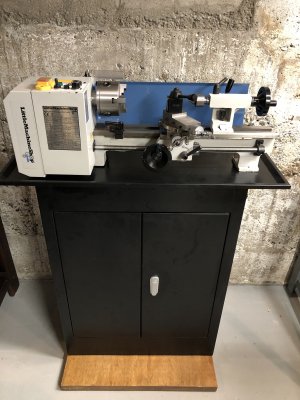- Joined
- Sep 11, 2019
- Messages
- 22
Quick update, scored a used LMS 5100 7x16 lathe last night!
The tool room is almost complete

It came with a crap ton of tooling and accessories, pretty much everything I would have ordered myself and more.
I was deeply considering the PM 10x22 lathe, but weight and basement access issues have slowed that idea.
I think I can do pretty much everything I need on this cute little unit, might just be able to make a better draw bar for the PM-25!
The tool room is almost complete

It came with a crap ton of tooling and accessories, pretty much everything I would have ordered myself and more.
I was deeply considering the PM 10x22 lathe, but weight and basement access issues have slowed that idea.
I think I can do pretty much everything I need on this cute little unit, might just be able to make a better draw bar for the PM-25!

